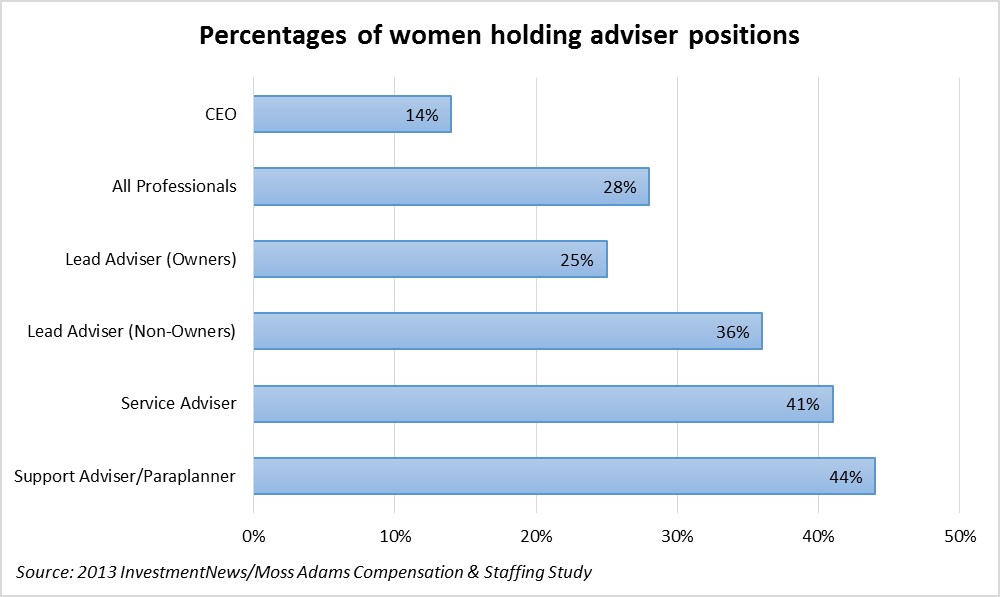Closing the female-adviser gap
More women hold positions other than lead advisory roles, but that could change with time
More than 324,000 individuals are identified in the U.S. Census as “personal financial advisers,” one of 536 occupations tracked in the census, according to the most recent data available from the U.S. Bureau of Labor Statistics. In this chart, we have identified the five that most closely resemble personal financial advisers in demographic composition by analyzing each occupation in the data set for proportion. The top five matches are a mix of titles associated with high income (dentists, CEOs), as well as niche industry posts (environmental scientist, information security analyst). If we can assume that the average client of an advisory firm can better identify with, and thus pursue, a professional who has a similar background and shared tradition, then this is somewhat unsurprising given that these occupations encompass some of the richest and most sought after client bases for advisers.
Using real median household income and the total workforce as guideposts, it is clear that while blacks are slightly underrepresented and Asians are slightly overrepresented, women and Hispanics or Latinos have the greatest shortfall of advisers. In our recent study on advisory firm staffing and compensation, we tracked information on gender for the first time. We found that among all advisory firm professionals, 28% were women (see chart below), closely matching last year’s census data. But that ratio increased as we looked further down the ranks. Thirty-two percent of those holding the lead adviser position, both owners and non-owners, were women. That figure moved up to 41% among service advisers, and 44% of paraplanners and 69% of client service administrators — common adviser-track entry-level jobs. As women continue to account for higher earnings, we expect that their advisory firm counterparts who now hold junior positions will advance in their careers and bolster the ranks of lead advisers, steadily closing the gap over the course of the next decade.
For more information on gender, staffing and compensation at advisory firms, visit our National Adviser Compensation Database.
Learn more about reprints and licensing for this article.







